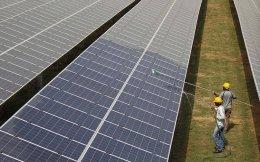Introduction
The Securities and Exchange Board of India (SEBI) has recently amended the SEBI (Mutual Funds) Regulations, 1996 (MF Regulations) to include a new chapter VI-B which provides for setting up and operating infrastructure debt funds (IDFs). SEBI’s move is part of the finance ministry’s proposal to accelerate and augment capital formation for debt funding for the government’s infrastructure development program. While the IDF regime seems to have been introduced under the umbrella MF Regulations to mobilize retail participation, however, a fine reading of the proposal indicates that the regime is formulated on the lines of a private equity fund structure with adequate checks to einsure participation by high net worth participants only.
Key Aspects
Eligibility
• An existing mutual fund operator may launch an IDF scheme, if it has adequate number of key personnel experienced in infrastructure sector.
• Any applicant, if they are proposing to launch only IDF schemes and if the sponsor or the parent of the sponsor has been carrying on the business in infrastructure financing for a period of at least five years and fulfill all other eligibility criteria applicable for sponsoring a mutual fund including that the sponsor that a net worth which is positive in all the immediately preceding five years and that it has contributed or contributes at least 40 per cent to the net worth of the asset management company.
Structure
• An IDF scheme can be either close-ended with a minimum five years maturity period or open-ended with a lock-in of five years with ‘interval periods’ of less than a month.
• Minimum size of the IDF scheme: The IDF scheme shall have an upfront firm commitment of INR 250 million from its ‘strategic investors’ (being either an infrastructure finance company registered with the Reserve Bank of India (RBI) as a non-banking financial company (NBFC)); a scheduled commercial bank; or an international multinational financial institution)
• Minimum ticket size for investors: A minimum amount of INR 10 million for each investor with no one holding more than 50 per cent of the net assets of the scheme. The minimum size of the units to be issued shall be INR 1 million and the same could be partly paid at the time of issuance. Upon subsequent capital calls, once the units become fully paid, they become capable of being listed.
Permissible Investments
• At least 90 per cent of the net assets of the IDF scheme shall be invested in debt securities or securitized debt instruments of infrastructure companies or projects or special purpose vehicles which are created for the purpose of facilitating or promoting investment in infrastructure or bank loans in respect of completed and revenue generating projects of infrastructure companies or special purpose vehicle.
• Not more than 10 per cent of its net assets in equity shares, convertibles including mezzanine financing instruments of companies engaged in infrastructure, infrastructure development projects, whether listed on a recognized stock exchange in India or not; or money market instruments and bank deposits.
• Not more than 30 per cent of its net assets in the debt securities or assets of any single infrastructure company or project or special purpose vehicles or bank loans in respect of completed and revenue generating projects of any single infrastructure company or project or special purpose vehicle which are rated below investment grade or are unrated (the limit may be extend up to 50% upon approval by board of trustees and the asset management company of the scheme).
• IDFs are not permitted to invest in unlisted securities or listed securities issued by way of preferential allotment of the sponsor, its associate or its group company. Further, an IDF shall not invest more than 25 per cent of all its net assets in listed securities of the sponsor, its associate or its group company or bank loan in respect otherwise eligible projects and companies.
Analysis
Given its formation structure, ticket size for investors and other specifics including ability issue partly paid units on which capital can be called on a ‘draw down’ basis, the IDF regime seems to replicate a private equity structure within the mutual fund framework which is primarily meant for retail participation. While the proposed SEBI (Alternative Investment Funds) Regulations, 2011 (that seeks to introduce a comprehensive regulatory framework for regulating private pools of capital) includes both debt funds and equity infrastructure funds within its proposals, it seems SEBI wanted to create a dedicated regime (focused on debt funding for infrastructure sector) under a tightly regulated framework that the mutual fund regime follows.
From a tax perspective, given that the IDF is to operate as a scheme of a mutual fund, all incomes arising from the IDF registered under Section 10 (23D) of the Income Tax Act, 1961 should be tax exempt at the hands of the IDF. Further, under the provisions of Section 10 (35) of the Income Tax Act, 1961 the returns received by the unit holders from the IDF scheme will be tax exempt.
Separately, the IDF regime as introduced, requires a valuation ‘in good faith’ of the assets held by an IDF every 90 days. This requirement may not be practical in the Indian scenario and such frequent valuations will only add to the administrative costs and expenses of an IDF.
While SEBI has, vide the mutual fund regulations, formalised the IDF regime using the trust route, RBI’s regulations are separately awaited that would guide the setting up of IDFs using the corporate route.
Conclusion
The IDF regime as introduced by SEBI seems to underpin infrastructure debt as an asset class and the regulator’s response towards mobilizing capital for meeting the deficits in infrastructure. It is also reflective of SEBI’s endeavour to develop a secondary debt market in India. Investing within the IDF regime should be attractive proposition for investors given that infrastructure is less sensitive to short term prospects and the mutual fund framework, within which such IDFs shall operate, will facilitate professional management and good governance.
SEBI seems to have taken a shortcut by introducing the IDF regime under the mutual funds framework instead of a separate specialised regime. It remains to be seen whether the IDF regime receives the same lacklustre response as was received by real estate mutual funds that was similarly launched by SEBI few years back.
(Richie Sancheti & Siddharth Shah are Partners with Nishith Desai & Associates, a Mumbai-based law firm.)





